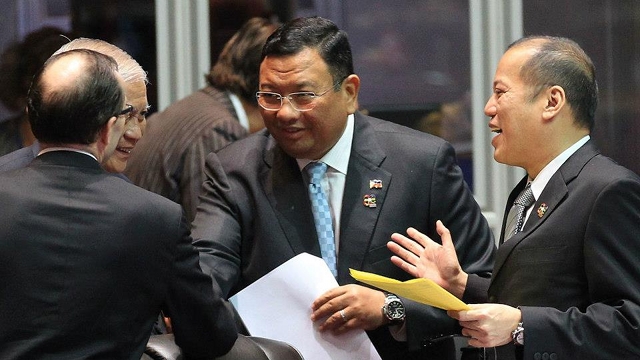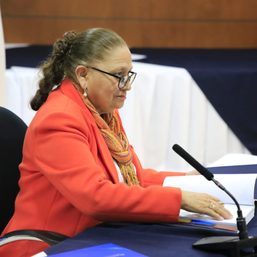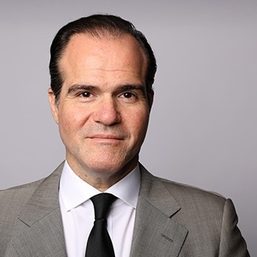SUMMARY
This is AI generated summarization, which may have errors. For context, always refer to the full article.

MANILA, Philippines – Secretary to the Cabinet Jose Rene Almendras dispelled rumors on Tuesday, June 18 that the all-day Malacañang meeting the day before was an emergency gathering.
He said it was a planned meeting of economic clusters to review the Philippine Development Plan, focused on achieving inclusive economic growth. He said they discussed “details” on “what happened in the first 3 years (of President Benigno Aquino III’s term), what are the options facing forward, what are the challenges and what are the solutions to some of those challenges.”
“It’s not about asking if we give ourselves a pat on the back or anything like that… [we asked] how can we make this better, how can we make this move faster, how can we drive impact to where we want it to go,” he said.
The President is expected to give his Ulat ng Bayan report on June 30.
On Monday, June 17, Cabinet members met with Aquino in a meeting that lasted from morning until night, fueling rumors they discussed urgent matters.
Almendras faced the media Tuesday to clarify it was “not an emergency meeting.”
While he refused to give details, Almendras said he is “personally very happy about the data we’re seeing.”
According to Almendras, the government’s other priorities include improving the delivery of services to people, generating more jobs, and reducing poverty.
“Again we’re not going to say this is a perfect plan,” he said. “We must be agile enough to [accommodate] whatever changes come.”
He mentioned climate, geopolitics, and economic downturn in other countries as factors that could affect the country’s economy, but said the government “accepts the fact there will be opportunities we will have to tweak and adjust according to the [changes].”
‘It will happen’
Almendras said that while the meeting was tedious and long, “the President was very energetic yesterday the whole time,” apparently interested in the discussions because of his economics background.
He said talks focused on specific “steps to make sure targets are going to be real,” and said they talked about planning, down to the level of execution, including not just strategies, but “the actions in those strategies.”
He said they discussed criticism that the high GDP growth numbers only favored the rich, although Almendras defended the growth to have already affected some communities. He vowed the growth will be felt by the poor by 2016.
“Yes it will happen within the President’s term. Our direction, the Presidents’ guidance, is how [the trickle down] will happen in greater magnitude and faster pace. There are communities already benefitting with existing programs we have,” he said.
“Rather than waiting for trickle down to happen, we’re looking for ways to push it down faster,” he added.
Almendras said part of ensuring this included understanding which industries have shown resiliency, which economic activities show potential, and within industries, understanding what their core competencies are.
The Philippine economy grew 7.8% in the first quarter of 2013, the highest since President Benigno Aquino III took office in 2010. The figure was better than the government’s 6% to 7% target — also the goal for full-year 2013 — and faster than the revised 7.1% bounce recorded in the previous quarter, and the 6.8% climb in 2012.
Integration
While the meeting was mainly for the economic clusters, education, health and social departments were present as well.
As an example, he said in addressing employment, they found growth in manufacturing services, but a dip in agriculture because of seasonality and weather. Part of the solution then has included asking the Department of Trade and Industry to look into which industries generate the most jobs, and to the Deparment of Agricuture for information on crops that generate the most benefits to people.
Unemployment in the first quarter rose despite the stellar economic growth, compared to a year ago.
“To be efficient, you need to integrate the plan so details must be discussed,” he said.
“There’s a very definite effort to make sure we’re maximizing, we have a little more than a thousand days left. We’re saying that in this period of time, we must be as effective as we can, more than we were in the first 3 years,” he added.
Almendras said they want to find an efficient model for government’s success. “One of the legacies President Aquino wants to leave behind is not just roads or bridges, but how well the government can work better. We are in that mode, too… what we can do to deliver services better,” he said. – Rappler.com
Add a comment
How does this make you feel?


![[WATCH] Try This: Empanada Salteña from Argentina](https://www.rappler.com/tachyon/2023/04/try-this-empanada-saltena-argentina.jpg?resize=257%2C257&crop=765px%2C0px%2C1037px%2C1037px)


There are no comments yet. Add your comment to start the conversation.